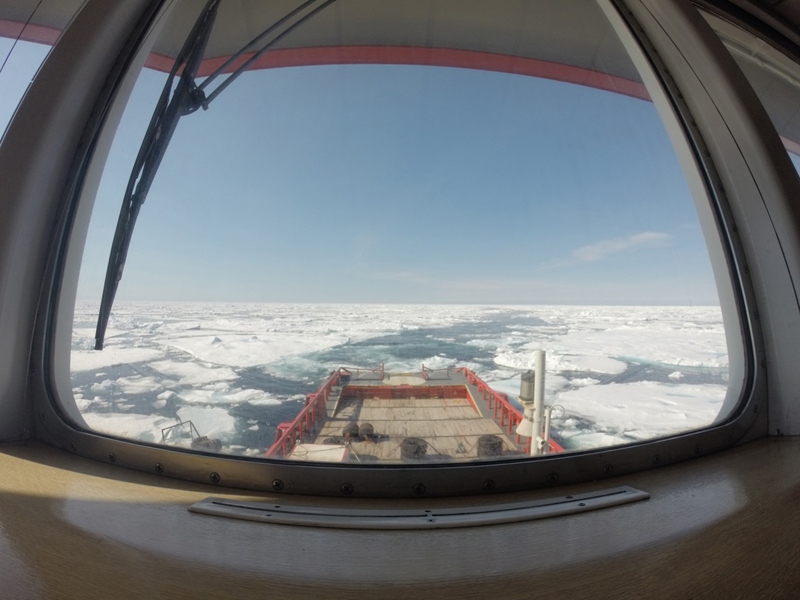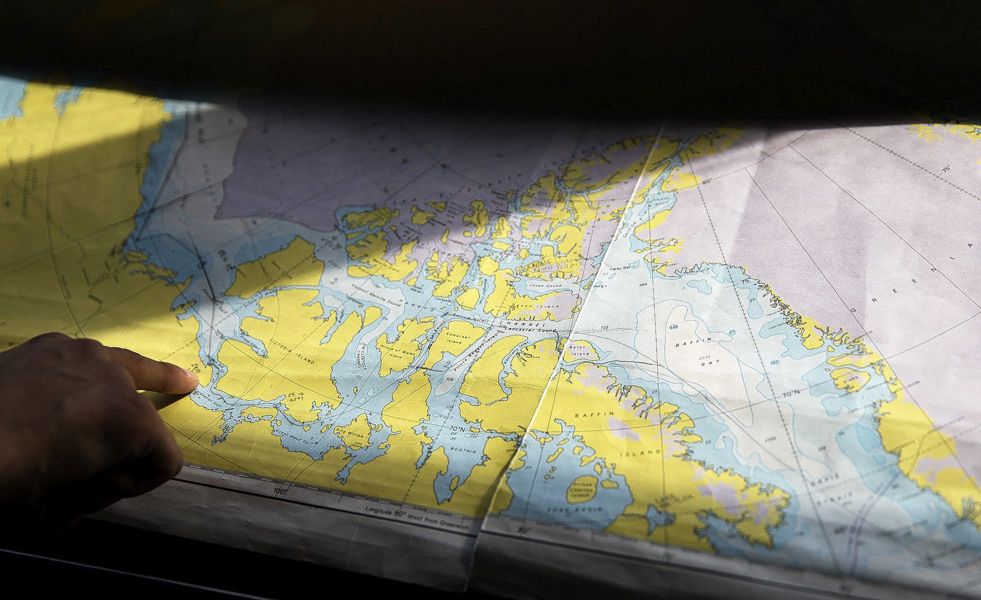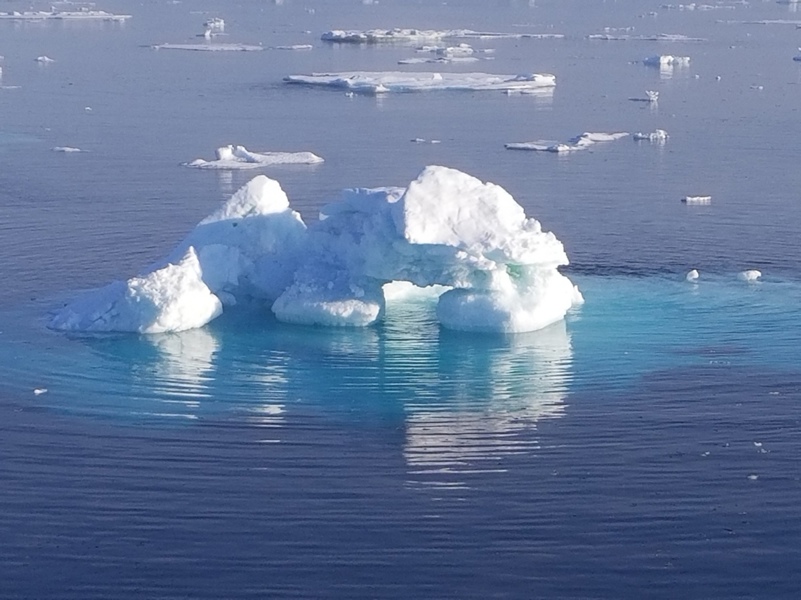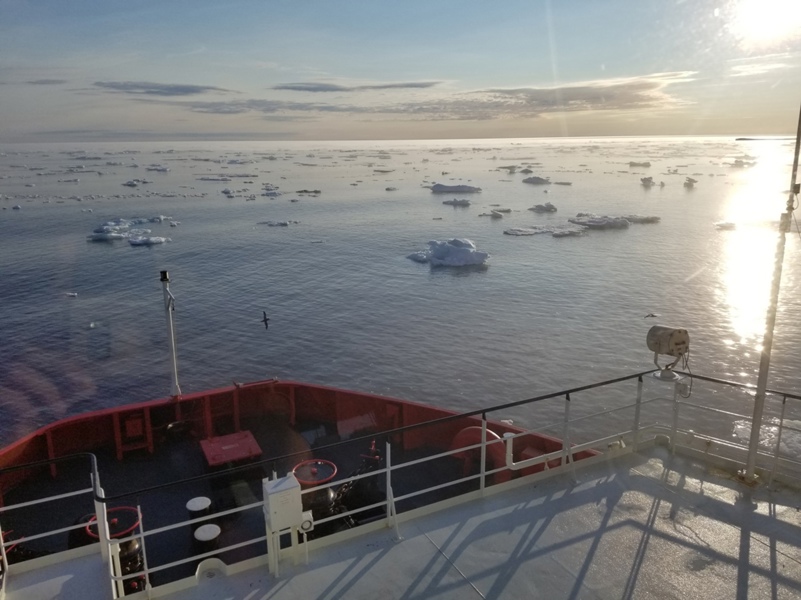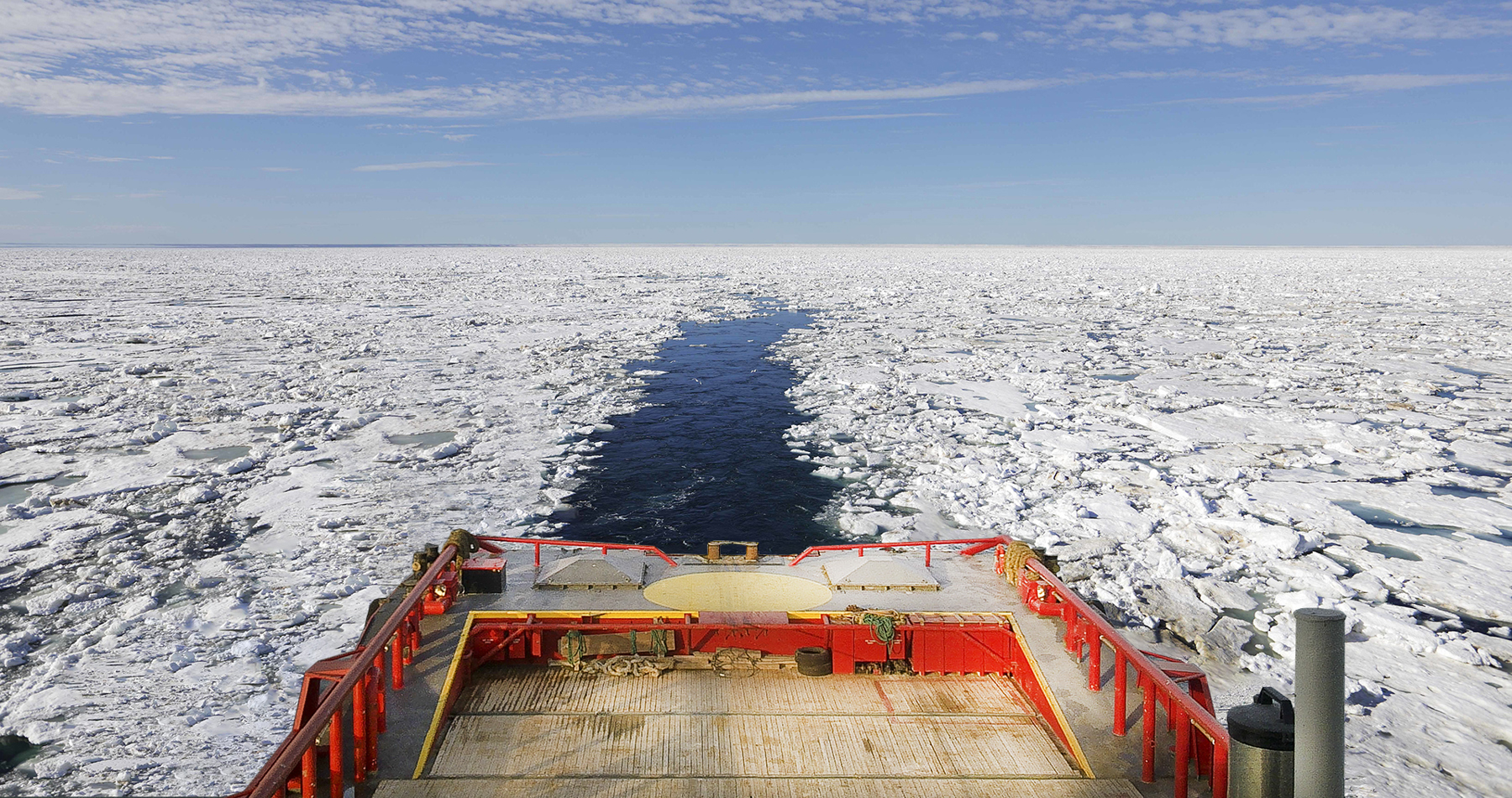
Logistical expert under arctic circumstances
North West Passage
Some time ago, travelling from the Atlantic to the Pacific Ocean was inextricably linked to a pass through the Panama Channel. There is however another route, one that is frozen over for most of the year: the Northwest Passage. Climate change has made this arctic route accessible for longer and earlier in the season. Last year, for the first time in its long shipping history, Wagenborg’s m.s. Africaborg successfully completed the Northwest Passage. With the Arcticaborg’s intended voyage to Vancouver a second chance arises.
Built for the Arctic
The Arcticaborg and her sister ship Antarcticaborg were constructed by Kværner Masa-Yards in Helsinki, Finland in 1998. These so-called ‘Shallow draft icebreaker supply vessels’ were specifically designed to be able to work in the shallow waters and severe ice conditions of the Caspian Sea. The Arcticaborg is able to move forward through 60 cm of ice and backwards through 90 cm. The fact that the icebreaking qualities in reverse mode are better, is because of the shape and the weight of the stern combined with the so-called ‘Azipod system’. This diesel electric propulsion system is ideally suited for ice operations, because unlike the traditional drive mechanisms it has no direct and thus vulnerable link between engine and propeller. The stainless steel propellers are driven electrically and are able to grind ice chunks.
Fathom Marine
After a decline in activities in Kazakhstan, the Arcticaborg has found new specialised work in a similar working environment. Wagenborg Offshore has signed a five year contract with Fathom Marine Inc. for providing marine support in the Western Canadian Arctic. The vessel will be operational from the Canadian port of Vancouver. Edwin de Vries, director of Wagenborg Offshore, explains: “The plans for the Arcticaborg fit Wagenborg Offshore’s strategy perfectly: to deliver complex and innovative maritime logistics for the offshore industry.”
“The plans for the Arcticaborg fit Wagenborg Offshore’s strategy perfectly: to deliver complex and innovative maritime logistics for the offshore industry.”
Edwin de Vries, director of Wagenborg Offshore
A long journey
The Northwest Passage however is not just any route. It required a lot of preparation before the Arcticaborg was able to leave Kazakhstan. According to Wilfried Boelens, operations manager at Wagenborg Offshore: “The vessel left the Caspian Sea through the Wolga-Don-Canal and the Sea of Azov. After a layover in Malta for bunkering, a change of crew and loading some spare parts the voyage continued towards Saint John’s in Newfoundland, Canada. The vessel was then reflagged from the Kazakh to the Antillian flag, and reclassified from RMRS to BV. Furthermore, the vessel passed inspection by the Canadian Coastguard and every other inspection in preparation of passing the Northwest Passage. Here, the crew was relieved by their Canadian replacements, with the exception of the captain and the chief engineer officer. All within six days!” From here the offshore vessel travelled north towards the arctic circle. To be able to work in the arctic the vessel has been fitted with additional navigation equipment such as a gyro compass, special radio equipment suitable for high latitude, and paper navigation charts. “Electronic charts don’t completely cover the area yet”, Wilfried explains. “During the trip the Arcticaborg received further support from a team of Wagenborg’s technical and nautical experts on shore. Furthermore, an experienced Canadian Ice Navigator sailed along to advise the captain on the bridge during the trip, and to communicate with the Canadian authorities.”
Hard at work
Since mid-July, the Arcticaborg is working in Tuktoyaktuk. From here, several radar stations along the Canadian shore will be provided with gas fuel, water and spare parts. Once the area completely freezes over around October, the Arcticaborg will travel through to Vancouver. From this port the offshore vessel will provide towing services until spring arrives.
